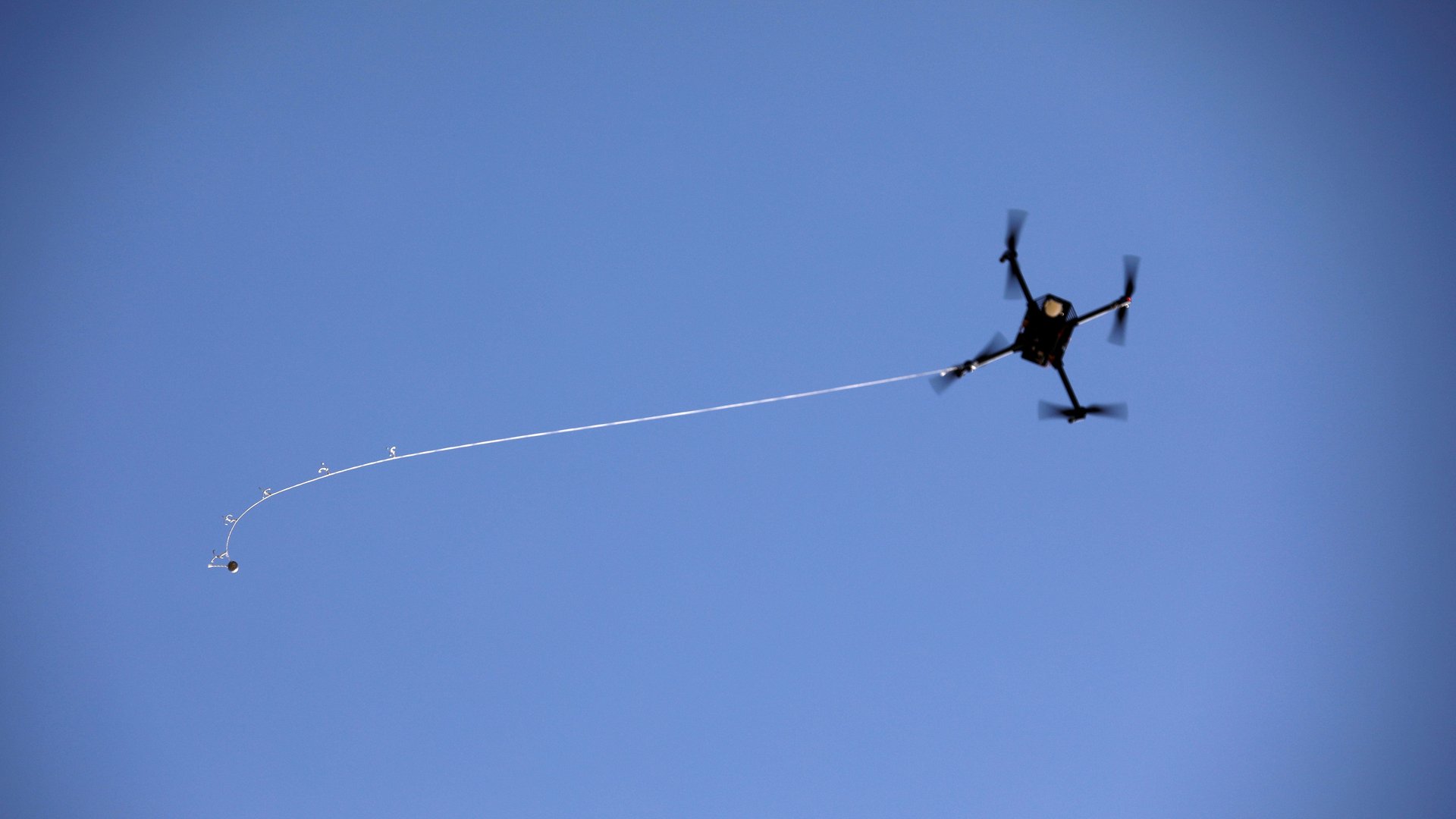Drones are the future in India—but only if the present policy is tweaked
The commercial applications of Unmanned Aerial Vehicles—or more popularly, drones—are immense.


The commercial applications of Unmanned Aerial Vehicles—or more popularly, drones—are immense.
Autonomous flight using drone technology can survey infrastructure projects or shoot wedding videos. It can even change the way Amazon or Flipkart deliver your packages. Yet, tapping that potential will require regulatory changes.
On Aug. 27 this year, India moved one step closer to ensuring the application of drones for civilian and commercial purposes when the ministry of civil aviation issued its first set of regulations to govern the nascent sector. Once they come into effect on Dec. 01, flying drones will become legal in India, but under a clutch of rules which include mandatory government permission before each flight.

Timothy Reuter heads the ‘Drones and Tomorrow’s Airspace’ project at the Switzerland-based World Economic Forum (WEF). The project’s stated aim is to “enable safe, clean, and inclusive use of drones for delivery, mobility, aerial data capture, and transportation of people.”
Reuter spoke with Quartz about India’s drone policy and what it means for the future of drone services and technology in the country.
Edited excerpts from the interview:
India is in the middle of defining its regulatory framework for drones. What do you think has gone right so far, and what could be done better?
It’s a very exciting moment. India’s civil aviation regulator, the Directorate General of Civil Aviation (DGCA), has done a nice job of balancing safety and accessibility with their new Digital Sky platform. The platform requires everyone who wants to operate in the airspace to register as a drone operator, to ensure that there’s accountability.
It also appears that it will be fairly quick and easy to receive permission to fly. You simply upload information about where you want to fly through an app, and the system automatically provides feedback on whether a permission is granted or not.
Obviously, we’ll have to see how this rolls out, but conceptually this is the direction that most of the leading governments are moving in to provide approvals for operations.
There are restrictions imposed—flight is allowed only during daytime, it should be within the visual line of sight, a prior sanction is needed for each flight, and one operator can control only a single aircraft at a time. Are these unfavourable for e-commerce players?
You cannot have economically-efficient drone delivery under the current rules, because you need to be able to fly beyond the visual line of sight, and have multiple aircraft per operator. That’s something that might be possible under the next iteration of regulations. So it depends on how fast the Indian government decides it wants to go and how important it considers this sector.
The DGCA has stated that it is going to look at the response to this current iteration of regulations, and then adapt in the future. India has the opportunity to be a leader in the drone sector, but that will require the government taking some calculated risks.
What do you mean by “calculated risks”?
Regulating drones requires a different approach than traditional aviation. For instance, the worst thing that can happen in general aviation is an airplane crashing. In the case of drones, you may find that crashing your drone is the safest thing to do. If you’re operating in a rural area or over your own property, and you have concerns about losing control, maybe you want to crash it. So it requires a different type of thinking about risks.
As the industry grows, the regulators need to invest more in thinking about the alternative approaches to regulating this technology, which will maximise social benefits while mitigating risks.
At this point, beyond the government business, what are the commercial opportunities for drone services in India?
Drone services in agriculture are valuable to farmers’ collectives and large-scale industrial farms. However, that’s not something that’s realistic for smallholders to engage in. But insurance companies, particularly those providing crop insurance, have already started working on drone technology.
Inspection of infrastructure is possible under the current regulations. There are opportunities in the industrial inspection of assets like solar panels and oil pipelines. The mining sector has been an early adopter of drone technology around the world. With drones, they can quickly and accurately estimate how much output is coming out of their mines.
Then there’s the commercial photography and videography sector. Drone videos of weddings are a popular thing now.
Do you see India being able to one day export to China and Asia Pacific countries, where there is a growing demand for drones?
I’m not sure if Indian companies, in the short-term, will be able to export technology or services to China. But in southeast Asia, there is an increasing acknowledgment of the potential benefits. If India moves quickly to establish its own industry and learn within its own borders, it can then bring those experiences to other countries in south and southeast Asia.
India’s drone market is expected to grow to $885 million by 2021. Who will be the winners in this race?
What we’ve seen in the US is a bit of a race between large companies like Google and Amazon, that are looking to deploy drone delivery, and smaller startups like Zipline and Matternet. And it’s still not clear who will be the winner.
We could say the same thing in India, with large conglomerates investing in the sector alongside small, nimble startups. You may also see startups getting acquired by larger companies that are looking to move into this sector.
It’s an exciting time because this is the moment where all of that potential is going to be unleashed because now there’s enough regulatory certainty and people can start making investments.
Drone companies are searching around the world for where they can implement their technology. There’s potential for any country to be the leader right now.
Uber has chosen India as one of the five countries for its pilot flying-car project. How viable do you think that would be here?
There’s a limit to how much more infrastructure can be built in cities without displacing existing communities. If you can take traffic into the third dimension, you can unleash the human potential that’s currently being lost to gridlock.
The question is: to what degree will the economics support it? As operations scale up, the cost per flight will go down. Once you start manufacturing drones at automative scale, there is talk that you could get cost per ride down to something like what you see for cars in industrialised economies.
When will the concept become profitable?
As we have seen in many of these markets, companies start off generating losses in the hope of establishing themselves and they eventually generate profits down the line.
Honestly, I think it will be 10 years before flying taxis achieve profitability. But the transformative power of this technology is compelling, and it is worthwhile for companies to make this investment upfront and establish themselves.
Is automation going to take away jobs from young Indians?
Automation is going to transform the type of tasks people do versus what machines do. And that will lead to significant displacement. But that does not mean that there will be a reduction in the total number of jobs. I think there will be some frictional unemployment. The coming transformation will require thoughtful investment in education by the government.
The good news is that the government is thinking deeply about this. The challenge is that nobody knows exactly what the important skills of tomorrow are. You need to make your best guesses, and try and predict the future.